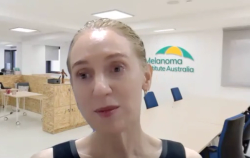Expert Talks Types of Skin Cancer Surgery, and What to Expect With Each
Surgery is the “gold standard” of treating skin cancer, but disease type and patient preferences could determine which type of procedure is used, an expert said.
Surgery is the “gold standard” for treating skin cancer, and with multiple surgical techniques, patients should talk with their clinicians to determine the type of surgery that is appropriate, explained Dr. Jonathan Zager, explained.
In a recent interview with CURE®, Zager, chief academic officer at Moffitt Cancer Center in Tampa, Florida discussed the different surgical options for patients with skin cancer, and what patients can expect with each one.
Mohs Surgery
Mohs surgery, which is used to treat basal cell carcinoma — the most common type of skin cancer — is a surgical technique that focuses on the cancerous lesion and preserves the normal, healthy tissue around it. As such, it is useful on places where cosmetic appearance is of concern, such as the head and neck, hands and back of the feet, according to Zager.
“(Surgeons) excise a little narrow margin, look at it under the microscope, and come back and take more if (they) need to. You map it out so you know where to take,” Zager said. “(Mohs surgery) is not necessarily used very often for melanoma and shouldn’t be used for invasive melanoma; we take wider margins for melanoma cases.”
Of note, a margin is the area of healthy (or healthy-looking) skin around a skin cancer lesion that is removed during surgery.
Electrodessication and Curettage
Electrodessication and curettage — commonly referred to as ED and C — involves burning the tumors and then scraping them off, along with a margin of normally appearing skin around it.
Zager explained that this is a relatively quick procedure, that is usually done by dermatologists, not by surgical oncologists. Patients can usually go back to their normal lives the next day.
“It’s a faster procedure and leaves you with an open wound that will heal over time,” Zager said. “It’s useful for basal cell carcinomas that aren’t on cosmetically sensitive areas, and maybe even for some superficial squamous cell carcinomas.”
However, ED and C has its downsides.
“While it’s effective, there’s no way to know if we got normal margins or not, because we’re just scraping and burning,” Zager said. “With an excision, a pathologist is going to look at the specimen.”
Wide Excision and Sentinel Lymph Node Biopsy
Patients with melanoma may undergo a wide excision, which is a bit more invasive than Mohs surgery, with 1-2 cm of normal-appearing skin being surgically removed. This is the most commonly used surgical technique for patients with melanoma, but depending on how deep the melanoma is penetrating a patient’s skin, they may rather need to undergo a sentinel lymph node biopsy.
During a sentinel lymph node biopsy, which is typically conducted in patients whose disease is 0.8 mm in depth or deeper, a clinician will inject a radioactive dye into the primary tumor incision. The dye will then move to the lymph nodes, and offer clues as to whether or not the cancer has spread to the lymph nodes.
With any type of excision, it may take longer to heal and for pathology reports to come back, compared to patients who underwent ED and C. However, allowing for this extra time, patients and providers will have more information on the disease and if it was all successfully taken out during the surgery.
“There’s a lot of benefits, per se, from the patient’s point of view to treat the same tumor in different ways,” Zager said. “Activities of daily living, habits, what they enjoy in life all weigh into the decision making for these tumors.”
For more news on cancer updates, research and education, don’t forget to subscribe to CURE®’s newsletters here.
Related Content
 Understanding Adjuvant and Neoadjuvant Melanoma Treatment
Understanding Adjuvant and Neoadjuvant Melanoma TreatmentFebruary 18th 2024
 Experts Give an Overview of the Latest Melanoma Therapies
Experts Give an Overview of the Latest Melanoma TherapiesFebruary 15th 2024
 What’s the Plan for Patients With Melanoma After Surgery?
What’s the Plan for Patients With Melanoma After Surgery?January 10th 2024
 Why Melanoma May Need Treatment After Surgery
Why Melanoma May Need Treatment After SurgeryNovember 15th 2023
 Solid Cancer Approvals from Summer 2023
Solid Cancer Approvals from Summer 2023September 1st 2023
View additional resources on CureToday.com




